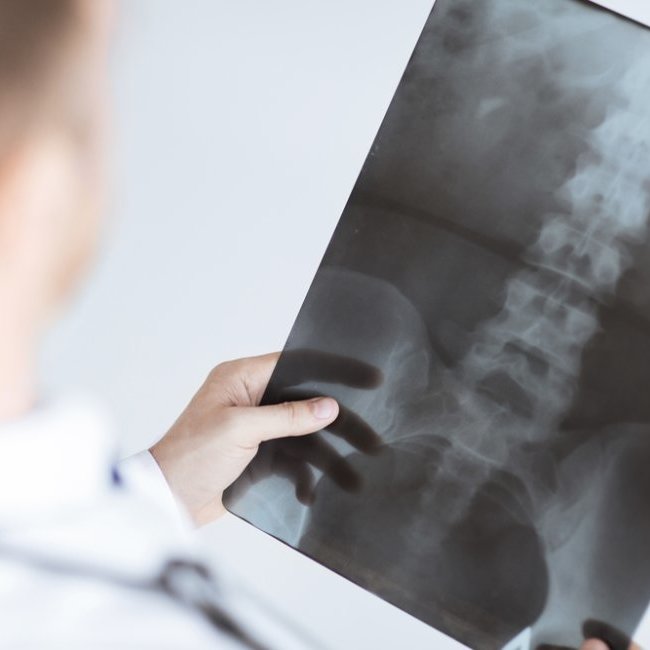


Physicians
Physiatry
Spine (non-operative)
 Healthgrades
Healthgrades
Physiatry
Spine (non-operative)
 Healthgrades
Healthgrades
Orthopedic Surgery
Spine & Neck
 Healthgrades
Healthgrades
PA's, APN-C and LPN's
Body parts
Overview: If you or someone you know has been in a car accident; has had a severe injury to head, neck, or back; experienced a violent blow or cut to the spine; or has any fracture that may compress the neck or spine, do not delay. Call 911 and get proper support to get to a hospital; do not attempt to move the victim by yourself.
What is spinal trauma?
Spinal trauma can result from any injury that affects the spine, neck, or head. Fractures, compressions, cuts, or dislocation of any of these can result in trauma that has a debilitating effect on the whole body. While an individual may not appear to be suffering unduly, the ramifications of this kind of injury may not appear until later. It is critically important that medical attention is promptly sought and received so that the extent of injuries can be evaluated and the amount of recovery possible is not compromised. If untreated, additional damage may occur from internal bleeding, swelling, inflammation, or fluid accumulation.
Because trauma can affect the spine in many different places and ways, symptoms can vary. You can experience any of following:
Motor vehicle accidents are responsible for the majority of spinal trauma injuries, but falls, for those over 65, are also a factor. Certain sports — those that are high impact, or sports like diving — and alcohol use, can contribute to higher risk. According to the National Spinal Cord Injury Statistical Center, just being male can be a risk factor: males account for about 80% of all new cases every year. External events can cause a wide range of damage to your spine, from minimal to critical; the outcome depends on the severity and placement of the injury. Once this is determined, rehabilitation and longer-term pain management efforts can begin.
For critical cases, hospitalization is generally required. Once the patient is diagnosed and the extent of injury determined, treatment can start. “There are all sort of different diagnostic tests that can be used in the hospital if they are indicated and can be administered without risking further injury,” says Michael Gutkin, MD, a physiatrist at OINJ. “If a person has neck pain, or is not fully awake, or there are other obvious signs of injury, tests such as CT scan, x-rays, and MRIs can be implemented to find out where we are. Once swelling, if any, has subsided, neurological exams can be employed to assess the level of injury.”
Rehabilitation protocols are key. “Most spinal cord injuries are going to be emergency room visits. At OINJ, we’ll be part of your ongoing treatment team; our sports medicine expertise and pain management experience will come to the forefront to give you the help you need as you heal. We’ll devise exercises that help you maintain and strengthen your muscles, and help with any motor skill recovery. Physical and occupational therapy can help you with any adaptive techniques you’ll need to learn,” says Christopher Castro, DO, another physiatrist at OINJ. “Dr. Gutkin and I specialize in non-operative spinal care, including interventional spine procedures. We are also rehabilitation specialists.”
Remember — don’t guess about the severity of an injury that can affect the spinal cord. Prompt attention makes a difference in outcomes.